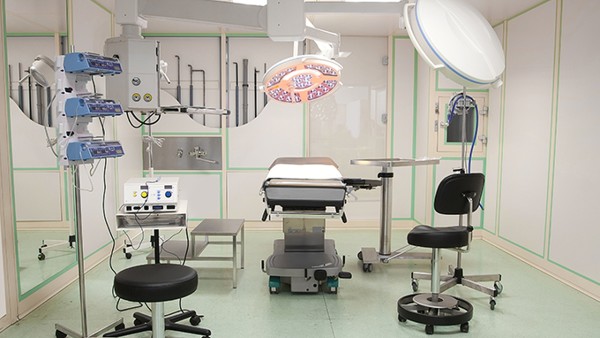How to Reasonably Arrange B-Ultrasound Examination during Pregnancy

1. Introduction
B-ultrasound examination during pregnancy is a necessary means to understand the development of the fetus in the womb. How to reasonably arrange B-ultrasound examination during pregnancy has a direct impact on the health of the pregnant woman and the fetus. Here we will sort out the relevant details for you one by one, and you can keep it for future reference.
2. Why is B-ultrasound examination needed during pregnancy?
B-ultrasound examination is an important means of prenatal diagnosis. It can be used to detect the fetal morphogenesis and growth and development status of various organs in the uterus, as well as detect whether there are abnormalities or malformations in the fetus. It is also commonly used to check the amniotic fluid volume, placental maturity, uterine and cervical structure, and fetal position and activity during pregnancy. Through B-ultrasound examination, doctors can timely grasp the physical condition of the pregnant and child, which is convenient for early detection and early treatment of various diseases.
3. When should B-ultrasound examination be performed during pregnancy?
The time of B-ultrasound examination during pregnancy is usually divided into three stages:
1) Early pregnancy (11-13+6 weeks)
This is the first B-ultrasound examination during pregnancy, also known as the "early pregnancy B-ultrasound".
Purpose: Mainly to confirm whether there is an intrauterine pregnancy and to exclude ectopic pregnancy; check whether the fetus is alive, the number of fetuses, and the gestational age; and detect whether there are major malformations in the fetus.
2) Mid-pregnancy (20-24 weeks)
This is the second B-ultrasound examination during pregnancy, also known as the "mid-pregnancy B-ultrasound".
Purpose: The main purpose is to perform a detailed B-ultrasound examination of the fetal morphology and structure, to detect whether there are any structural abnormalities in the fetus, and to perform a preliminary screening of fetal heart and major nervous system abnormalities.
3) Late pregnancy (28-32 weeks)
This is the third B-ultrasound examination during pregnancy, also known as the "late pregnancy B-ultrasound".
Purpose: Mainly to understand the fetal growth and development, the position of the placenta, the maturity of the fetus, and the volume of amniotic fluid; to detect whether there is fetal distress and whether the fetus is suitable for labor; to provide a reference for the choice of labor method.
4. How often should B-ultrasound examination be performed during pregnancy?
In general, at least three B-ultrasound examinations are recommended during pregnancy: once in early pregnancy, once in mid-pregnancy, and once in late pregnancy. In addition, doctors will recommend the frequency of B-ultrasound examinations based on the physical condition of the pregnant woman and the fetus, which may be more frequent or less frequent.
5. What should be paid attention to during B-ultrasound examination during pregnancy?
(1) Do not eat before the B-ultrasound examination during early pregnancy, because the bladder is required to be full to clearly observe the intrauterine conditions;
(2) Drink plenty of water before the B-ultrasound examination during mid- and late pregnancy, and try not to urinate, because it is necessary to have a full bladder to clearly observe the intrauterine conditions;
(3) Wear comfortable and easy-to-take-off clothes before the B-ultrasound examination, so as not to affect the examination;
(4) Relax and cooperate with the doctor during the examination to facilitate the examination;
(5) Do not worry too much about the radiation of the B-ultrasound examination. The radiation dose of the B-ultrasound examination is very low and will not cause harm to the pregnant woman and the fetus.
6. In addition to the necessary B-ultrasound examinations, when else is B-ultrasound examination needed during pregnancy?
In addition to the necessary B-ultrasound examinations, the following situations require additional B-ultrasound examinations:
(1) Vaginal bleeding during pregnancy;
(2) Abdominal pain or uterine contractions during pregnancy;
(3) Decreased fetal movement, suspected fetal distress;
(4) Suspected placenta previa, abruption, or other placental abnormalities;
(5) Suspected premature rupture of membranes;
(6) Multiple pregnancy;
(7) History of fetal abnormalities or genetic diseases;
(8) Other special circumstances.
7. Conclusion
B-ultrasound examination is an important way to monitor the health of the pregnant and child during pregnancy. Reasonable arrangement of B-ultrasound examination during pregnancy can help pregnant women better understand the physical condition of the fetus, detect and treat birth defects and other diseases in time, and ensure the smooth delivery of the fetus. Therefore, pregnant women must pay attention to the reasonable arrangement of B-ultrasound examinations during pregnancy.
The above is all the content that the editor wants to share with you. I sincerely hope that these contents can bring some help to your life and health, and I also wish that your life will be happier and happier.
Topic: #reasonably #arrange #how










